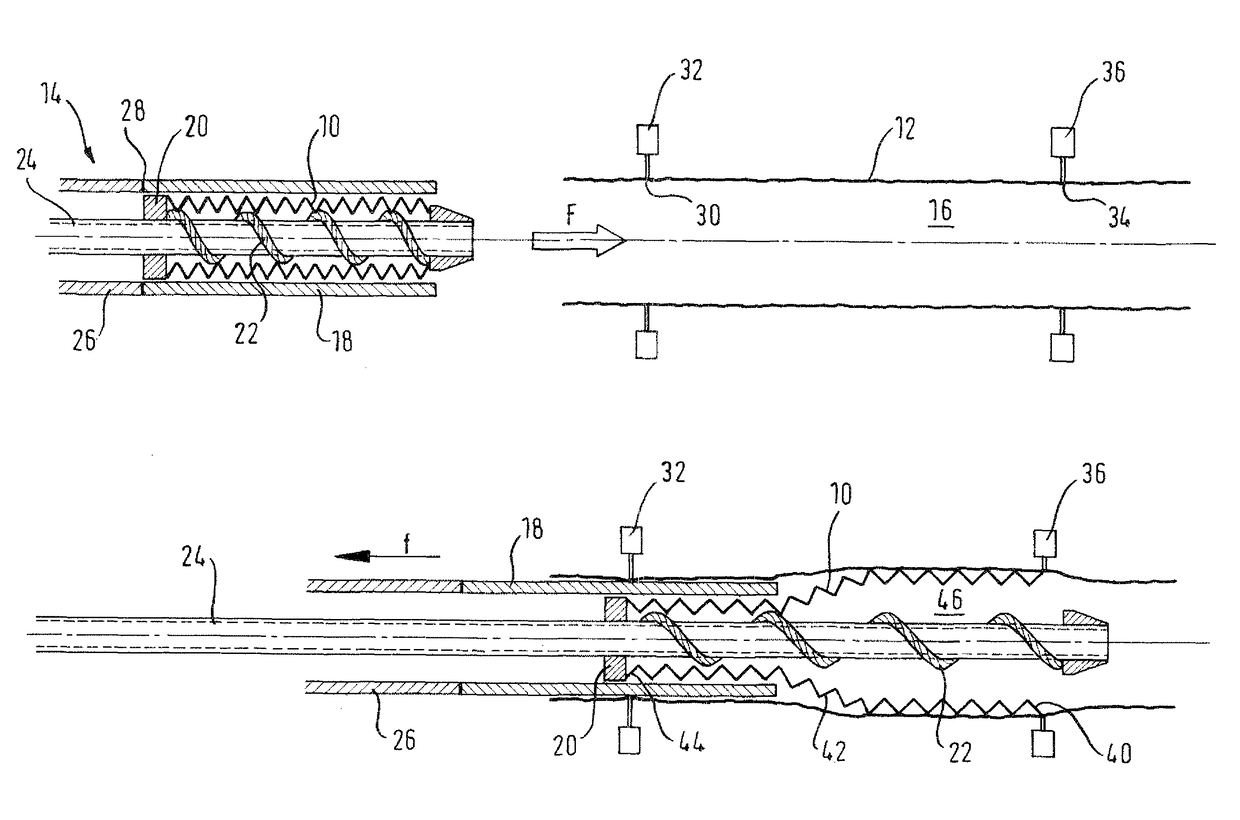Method of loading a stent into a sheath
a self-expanding, stent technology, applied in the direction of prosthesis, blood vessels, medical science, etc., can solve the problems of imposing tensile stresses on the sheath material, the sheath component must be robust enough to withstand and the sheath component must be robust enough to withstand the less than optimal handling of the stent delivery system. , to achieve the effect of maintaining the required level of robus
- Summary
- Abstract
- Description
- Claims
- Application Information
AI Technical Summary
Benefits of technology
Problems solved by technology
Method used
Image
Examples
Embodiment Construction
[0063]FIG. 1 shows a crimped covered stent 10 ready for deploying from a loading sheath into a delivery sheath 12, by advancing the stent 10, in a loading tool 14 into the lumen 16 of the sheath 12, in the direction of arrow F.
[0064]The stent 10 is a radially self-expanding nickel titanium alloy stent covered in an ePTFE film. This covered stent is constrained by a loading sheath 18 in a radially compact disposition. The stent is installed in the loading sheath 18 by a “crimping” procedure known per se in which a jig (not shown) compresses the stent radially inwardly, down to its compact disposition, whereupon the stent 10 and the loading sheath 18 are moved relative to each other axially (usually by holding the sheath 18 stationary and translating the stent 10 into the lumen of the sheath 18).
[0065]Before the stent is crimped, there is inserted in its lumen a shaft 24 carrying a sequence of rings standing proud of the cylindrical surface of the shaft, or a spiral thread 22 running ...
PUM
 Login to View More
Login to View More Abstract
Description
Claims
Application Information
 Login to View More
Login to View More - R&D
- Intellectual Property
- Life Sciences
- Materials
- Tech Scout
- Unparalleled Data Quality
- Higher Quality Content
- 60% Fewer Hallucinations
Browse by: Latest US Patents, China's latest patents, Technical Efficacy Thesaurus, Application Domain, Technology Topic, Popular Technical Reports.
© 2025 PatSnap. All rights reserved.Legal|Privacy policy|Modern Slavery Act Transparency Statement|Sitemap|About US| Contact US: help@patsnap.com



